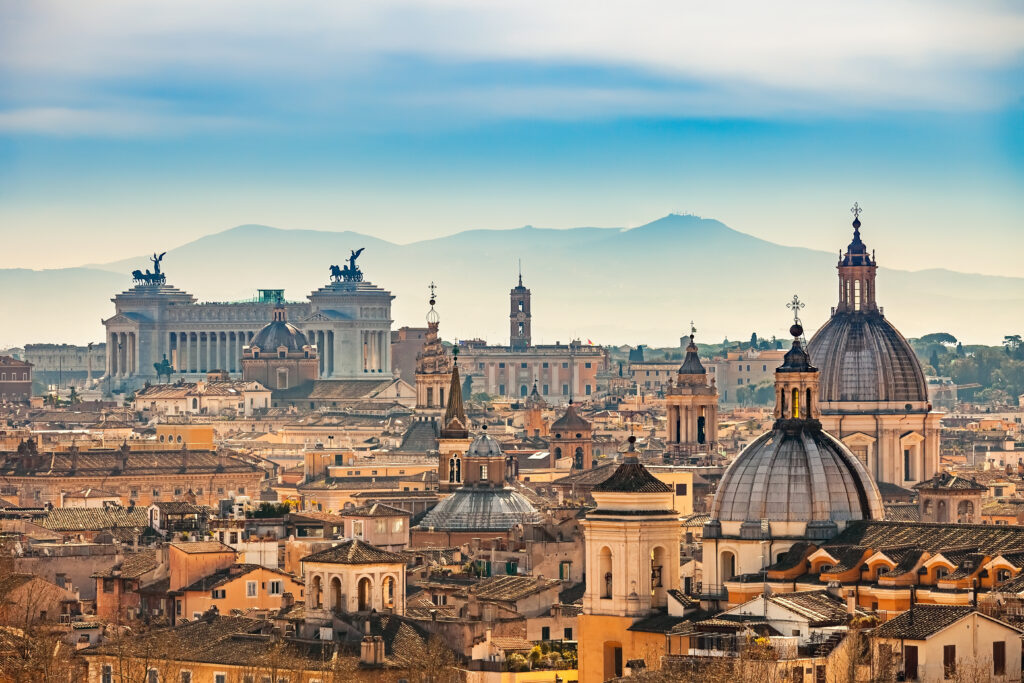
Rome is one of Italy's must-visit cities! Some have sung the praises of its weekends, others have decided to film seventh-art gems here... Rome, the beautiful, the unique, the timeless. Numerous typical corners, rich both culturally and visually, await you! Strolling the city's seven hills, you'll travel between churches and museums, Baroque and Renaissance, fountains and majestic landmarks, ancient and modern. Yes, to visit Rome is to enter a veritable open-air museum. From the moment you set foot in the city, you'll be immersed in sunshine and history. Here, Le Petit Futé presents the 21 must-sees of this ageless city.
1. What to do in Rome Visit the Colosseum
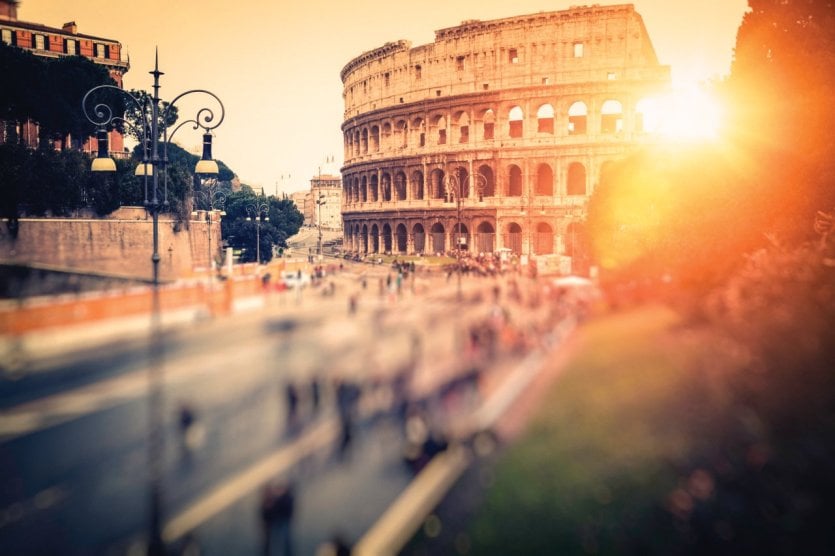
kaisersosa67
The Colosseum, or Colosseo in Italian, is to Rome what the Eiffel Tower is to Paris. Considered the largest amphitheatre in the world, it measures 189 m by 156 m and is 48 m high. Its colossal size enabled it to accommodate up to 75,000 spectators! A little anecdote: spectators used pieces of pottery instead of paper to mark their place on the ticket. Built by Emperor Vespasian in 72, the edifice suffered many setbacks until the 6th century. Still standing today, it was Pope Clement XI who enabled the Colosseum to survive the passage of time by naming it a sacred site. In view of the Colosseum's popularity, we recommend that you purchase tickets in advance to avoid the long waiting lines. And don't forget to read our article on visiting the Colosseum in Rome, where you'll find lots of useful tips!
2. What to do in Rome Strolling through the Trastevere district
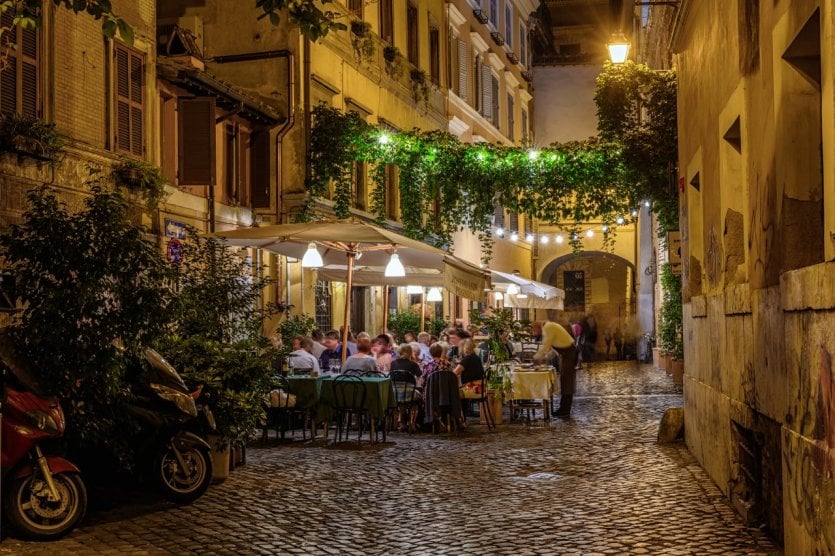
catarina Belova - Shutterstock.com
There's a good reason why Rome is one of the must-visit capitals of the world! With its colorful alleyways, magnificent monuments and Romanesque fountains with pure Italian allure, there's nothing more pleasant than a stroll through this area. This district of working-class origins has retained its festive character and chaotic atmosphere. During your visit, you'll catch a glimpse of the Basilica of Sainte-Cécile, a place with an unusual history! Pope Paschal is said to have had an apparition of the saint, showing him the exact location of her remains. Miraculously, the body was found. As a result, the basilica was built on the site of the saint's former home. Another nearby point of interest is the Janiculum hill, the ancient frontier of Etruscan country, which offers one of the finest views of Rome.
3. A visit to the Villa Borghese during a stay in Rome
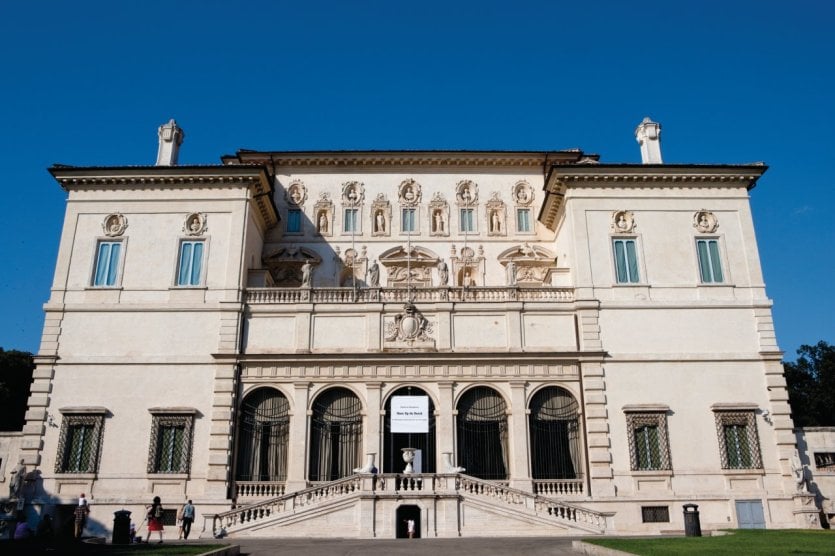
philippe GUERSAN - Author's Image
The Villa Borghese is one of Italy's most famous villas. It houses one of Europe's finest collections of classical and Renaissance works. Examples include Raphael's Lady with Unicorn and Caravaggio's David with Goliath's Head. In addition to a place rich in history, the residence boasts an immense park occupying the height of the Pincio, stretching as far as the balcony overlooking the Piazza del Popolo. Made up of the former estates of Roman noblemen, it's a pleasant and soothing place to take a stroll. It's an ideal activity for visiting Rome on vacation with your children, for example ! You'll see a large number of statues, most of them copies of antiques, and temples dedicated to ancient Roman gods: Adonis, Faustina, Diana. Discover our guide to the Villa Borghese !
4. What to do in Rome Piazza Navona
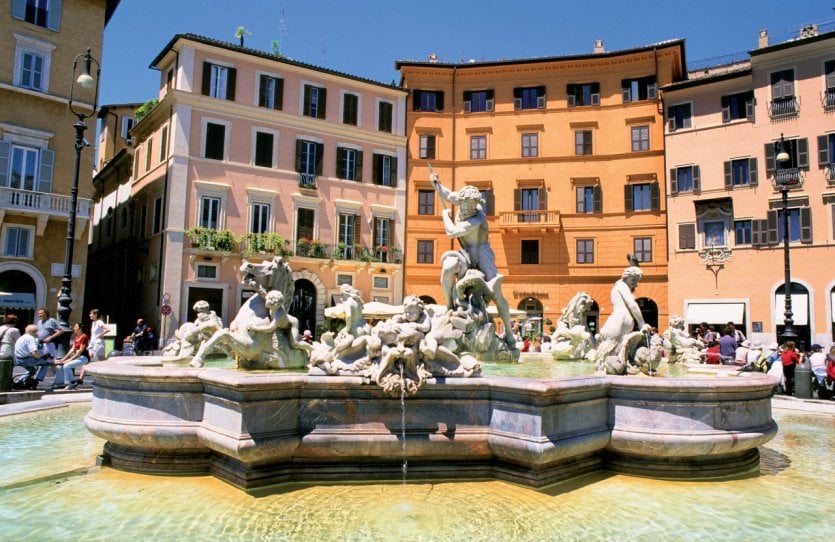
© Authors Image
Formerly the Emperor Domitian's stadium, this justifies the square's oblong shape. At its center, you can see Bernini's work completed in 1651: the Fountain of the Four Rivers. Celebrating the Danube, the Rio de la Plata, the Nile and the Ganges, this fountain is a marvel to behold as you sit by a café, listening to the musicians and, why not, the fortune-tellers. Not far from this jewel is another church to visit during your stay in Rome: the church of Sant'Agnese in Agone designed by Baroque master Francesco Borromini. Don't forget to head down to the south-west to meet Pasquino, one of Rome's most famous talking statues!
5. Capitoline Square
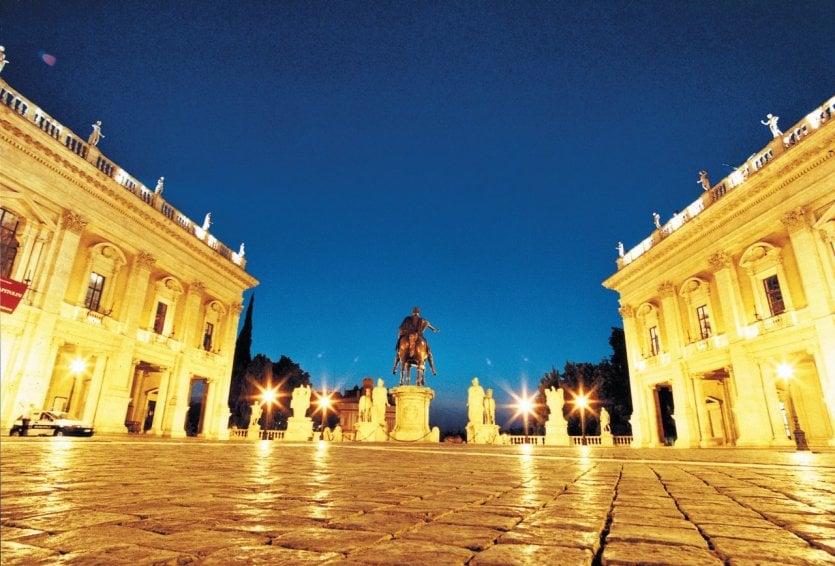 stéphan SZEREMETA
stéphan SZEREMETA
A must-see natural fortress of Rome, the Capitoline overlooks the Tiber River on one side and the Forum valley on the other. Its name derives from the discovery of a human skull on its summit. To get up to this fortress, you'll have to choose between two staircases, each populated with treasures for the eyes: a fountain of Egyptian lions, statues of Cola di Rienzo and Castor and Pollux... At the center of Piazza del Campidoglio, designed by Michelangelo, stands the equestrian statue of the former Roman emperor Marcus Aurelius. Here you'll find the world's oldest museum and the legendary Tarpeian Rock, which in ancient times was a place of punishment for traitors...
6. What to do in Rome The Fontana di Trevi, the myth of Rome
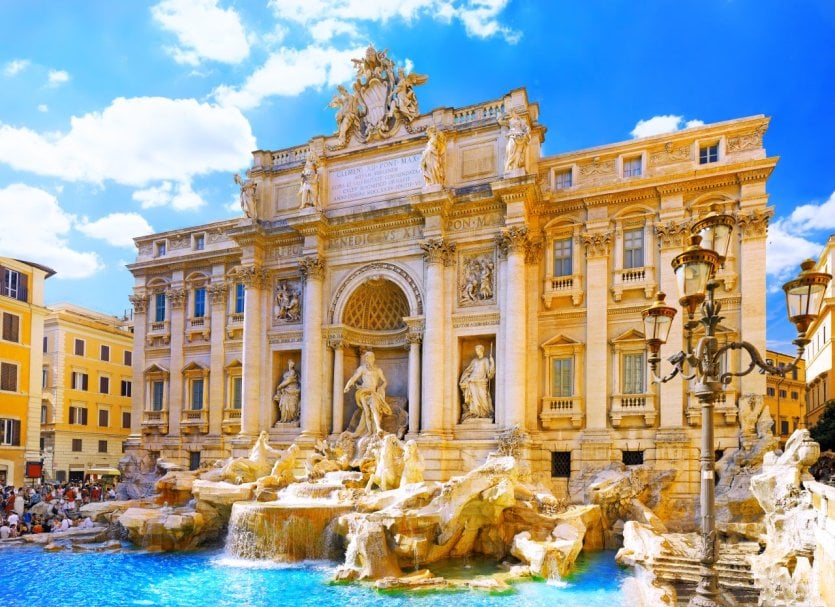
brian Kinney / Shutterstock.com
It's the place where Anita Ekberg takes one of the most beautiful baths the cinema has ever seen in La Dolce Vita: the Trevi Fountain is a masterly place shrouded in magic. Created in the 18th century and designed by sculptor Niccolo Salvi, it was commissioned by the pontiff to replace a small fountain that marked the intersection of three streets. Supported by the Palazzo Poli, Neptune, god of the seas, is at the center, accompanied by two allegories: Abundance, signifying the riches of the sea, and Salubrity, holding the rod of Aesculapius, attribute of the god of medicine, to remind us that water brings life and health.
7. A must-see is St. Peter's Basilica in Rome
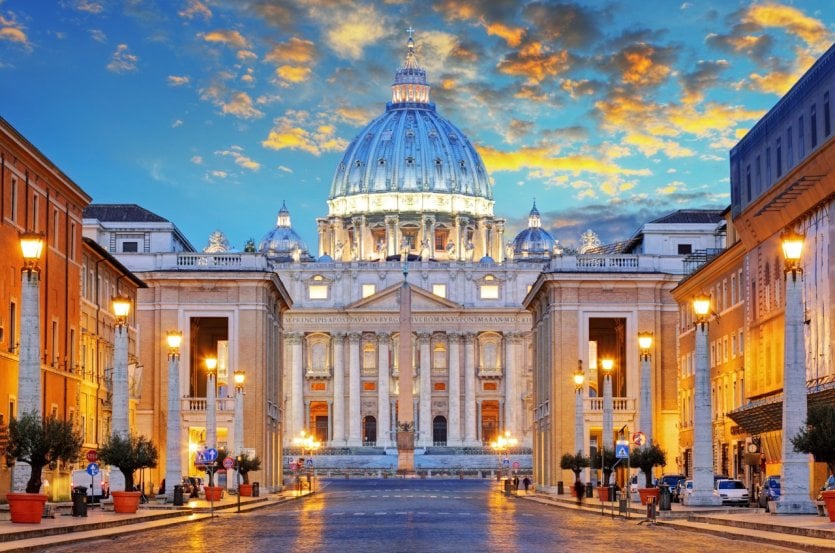
tTstudio / Shutterstock.com
in 64 AD, the apostle Peter died in Rome and was buried in the circus on the Vaticanum plain. A popular tradition quickly developed around the site, and it became a major place of pilgrimage. The first basilica was built in 324. After its completion, further work was planned, but the death of the architects delayed its completion. At the pope's request, Michelangelo drew up new plans based on the old ones. The splendid dome he created in Rome remains to this day the highest dome in the world that you can visit. Other artists, including Bernini, also contributed to the building's construction. If you'd like to take a group tour of Rome's St. Peter's Basilica, the Vatican Museums and the Sistine Chapel, we recommend you book a guide here , who will explain the fascinating history of these monuments.
8. What to do in Rome Visit the Vatican Museums
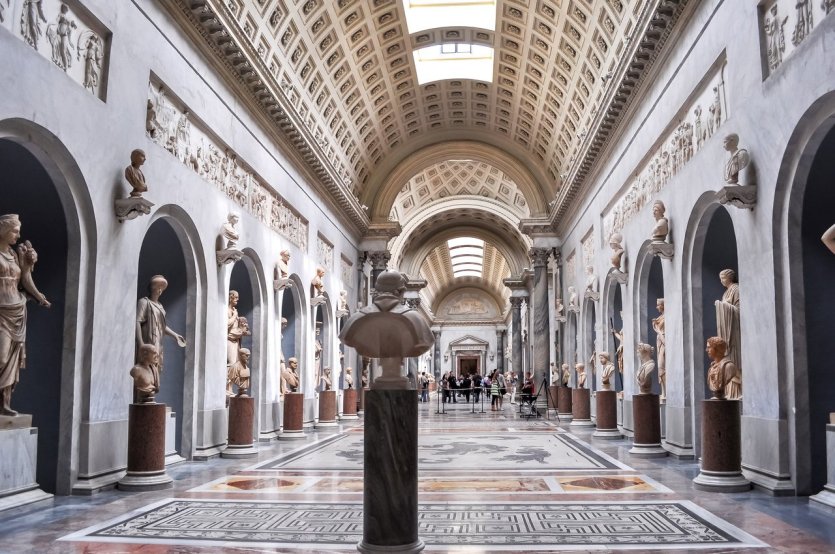
The Vatican Museums© Mistervlad - Adobe Stock
For art lovers, the Vatican Museums in Rome are among the most important museums in the world to visit. They house major masterpieces from the Egyptian era to the Renaissance, including the mythical Sistine Chapel mentioned below. You can also visit the Gregorian Etruscan Museum, the Pinacoteca, the Missionary Ethnological Museum and Raphael's Rooms. To avoid queuing at the entrance, we advise you to reserve your tickets before your visit. If you wish to prepare your visit to the Vatican and the Sistine Chapel as well as possible, take a look at our dedicated article, where you'll find a wealth of practical information!
9. What to do in Rome Visit the Vatican Gardens
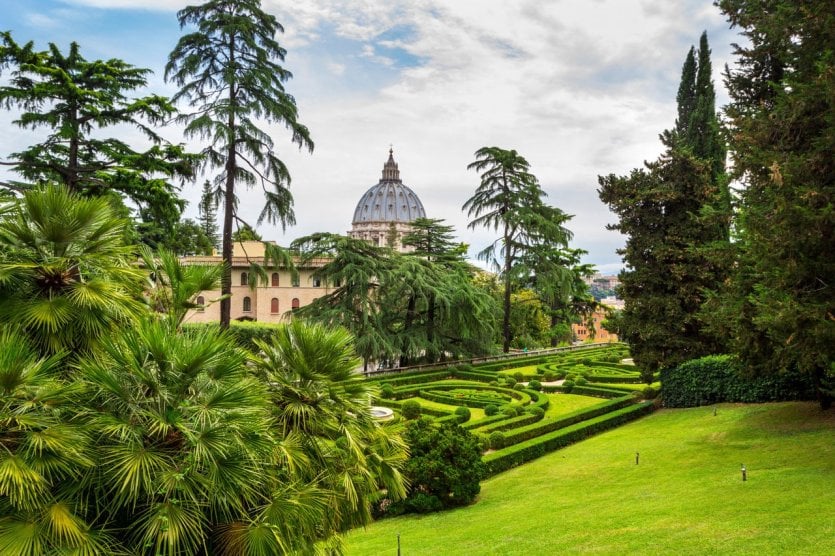
The Vatican Gardens© lara-sh - Adobe Stock
A veritable treasure trove of greenery in the heart of Rome to visit during your vacation! Strolling along the quiet paths of the Vatican Gardens, you can admire the diversity of garden styles: Italian, English and French. Don't miss such iconic spots as the Square Garden, the Little House of Pio IV, the Aquilone Fountain, the Grotto of Lourdes, the monument to the assassination attempt on Giovanni Paolo II and the Vatican Radio building. At present, the Vatican Gardens can only be visited with a guide. It is therefore necessary to book a guided tour of the Vatican Gardens.
10. The Sistine Chapel, a must-see work of art in Rome
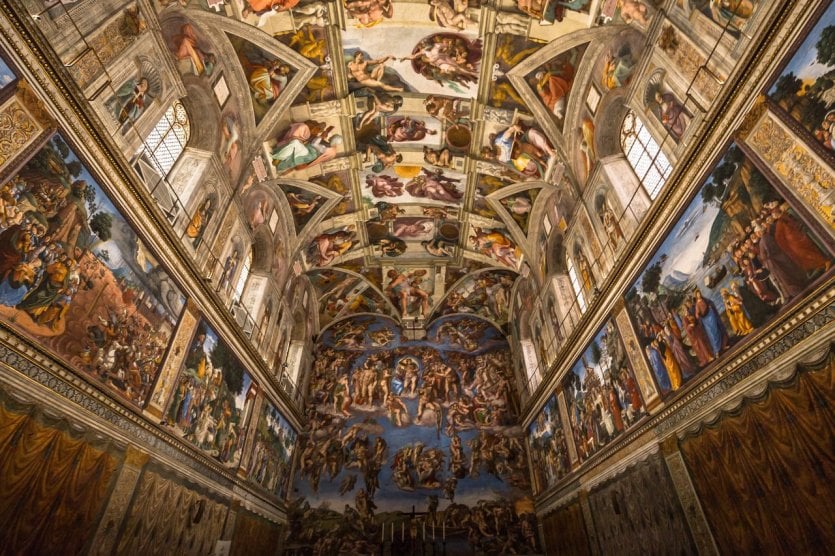
Sistine Chapel, Vatican Museums© RPBaiao - Shutterstock.Com
We warn you, allow at least a morning or afternoon to visit Rome's Vatican Museums! On Wednesdays, it's possible to attend the papal audience free of charge by collecting invitations the day before at the bronze gate. What is open to the public is the complex of two palaces and the two long galleries that unite them. Thanks to papal collectors and commissions, the museum boasts a rich collection of Greek, Roman, Egyptian and Etruscan art. The Sistine Chapel is, of course, the focal point of your visit. Created between 1471 and 1484, it was painted by Michelangelo and depicts biblical episodes from the Last Judgment. Pope Francis has also authorized visits to the gardens, albeit on a limited scale. Our advice is to book online, which allows you to to take advantage of reduced-price tickets as the gardens are relatively popular with tourists.
11. Piazza Campo de' Fiori
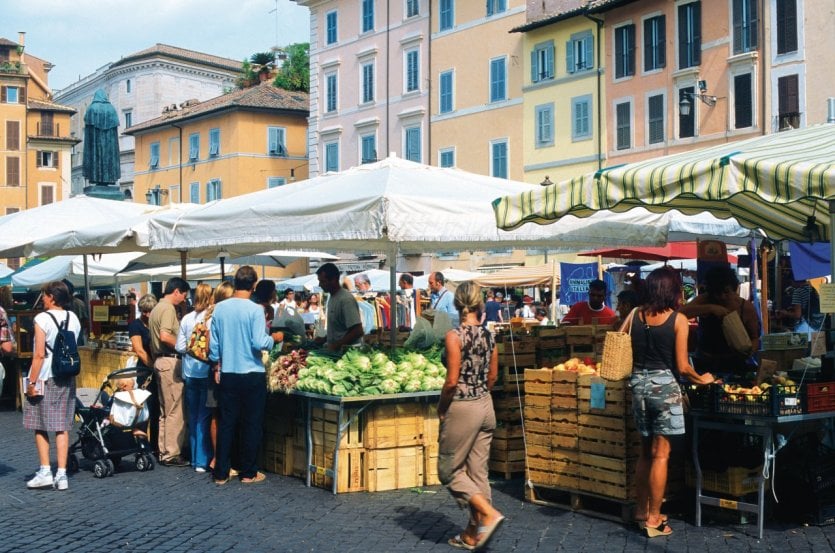 authors Image
authors Image
One of Rome's most pleasant squares , with its old buildings and four-season market. Today, you'll find all kinds of products here, including fruit, vegetables, fish, cheese, flowers, charcuterie - in short, everything that makes up the flavors of Italy! However, prices are higher than average, but the picturesque atmosphere is there! In the evenings, the place has a festive air, with numerous bars, restaurants and trattorias coming to life. A statue in the center of the square will undoubtedly arouse your curiosity. This man is Giordano Bruno, a philosopher-monk burned during the Inquisition.
12. Visit the Pantheon, one of the pillars of Rome's history
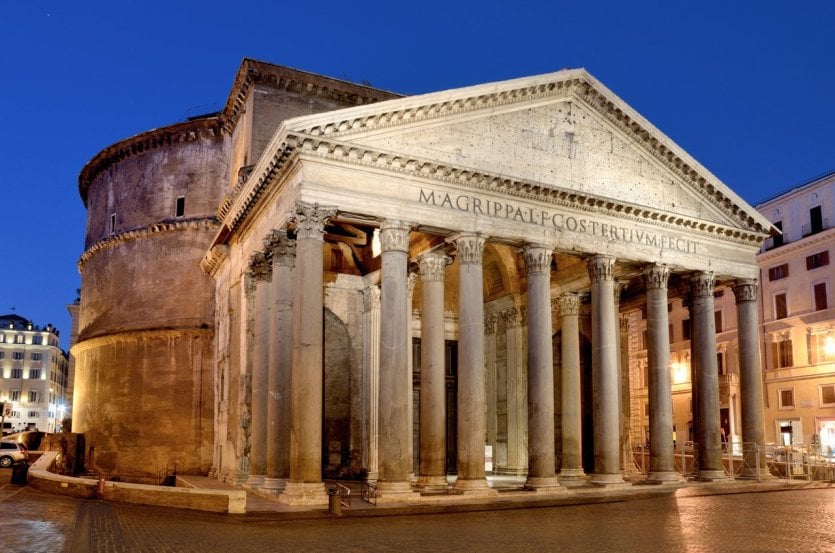
The Pantheon© fabiomax - Adobe Stock
Built by Emperor Hadrian between 119 and 128 A.D., Rome's Pantheon is one of thebest-preserved monuments of the Roman era to visit! Inside, pay particular attention to the sublime dome, the colorful marble floor and the superb period doors. Don't miss the mausoleums inside the Pantheon, including those of the painter Raphael and several Italian kings. Admission is free, but if you'd like to discover its fascinating history in depth, you can you can easily book a guided tour.
13. What to do in Rome The Roman Forum
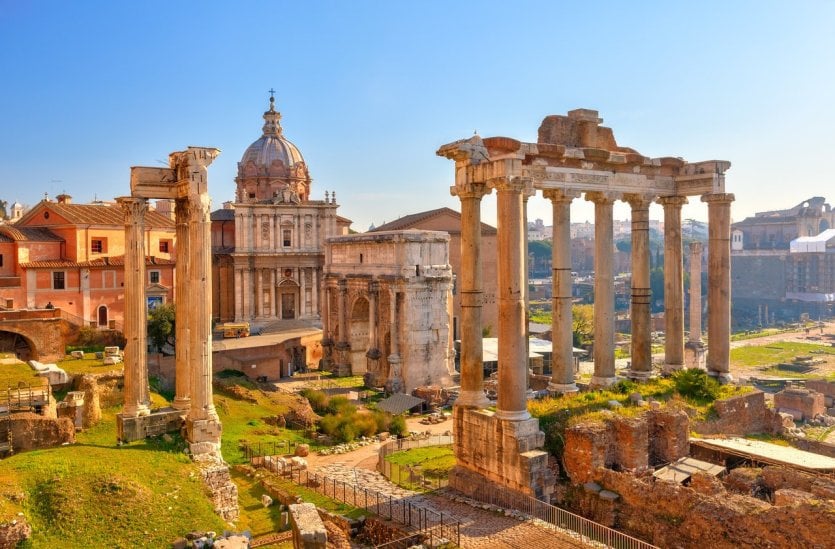 The Roman Forum© sborisov - Adobe Stock
The Roman Forum© sborisov - Adobe Stock
If you liked the Pantheon, the Roman Forum is a must-see! This was the center of the ancient Roman Empire, the main square where Romans gathered to meet, worship, buy and sell, and make important political decisions. Stroll along the archaeological excavations to admire ancient temples, triumphal arches and other period buildings such as the Curia (Senate House), the Temple of Saturn, and the Arch of Septimius Severus. To save money, we advise you to buyall-inclusive ticketsincluding visits to the Colosseum, the Forum and Mount Palatine.
Going on a romantic vacation? Rome is full of magical places to propose to your loved one, and the Roman Forum is a classic. So let's hear it...
14. What to do in Rome Take a photo at La Bocca della Verità
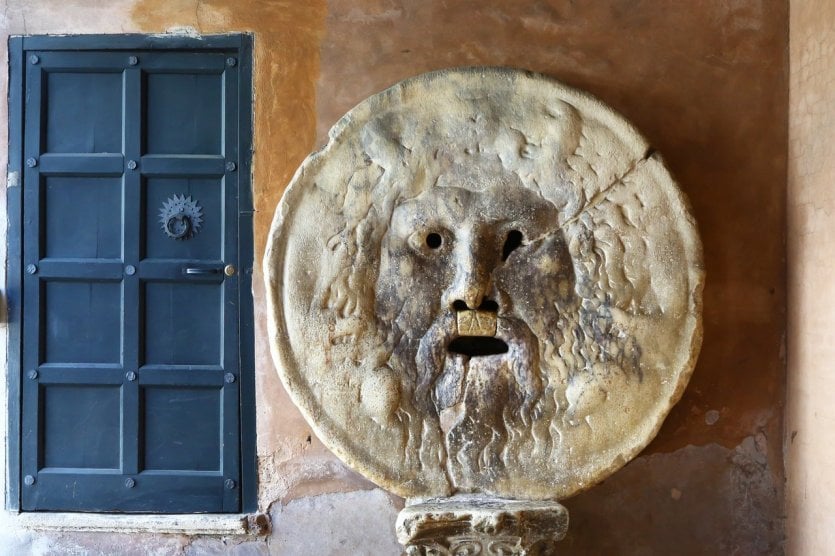
La Bocca della Verità© Sylvio - Adobe Stock
An ideal activity for the whole family! Located outside the church of Santa Maria in Cosmedin, in the Aventino district, the Bocca della Verità, or Mouth of Truth in French, is a large stone disc representing a man's face. Legend has it that only liars will have their hand bitten if they insert it into their mouth. To test this, place your hand in the hole in the middle and see what happens... Thousands of tourists flock to Rome every year to see this mythical manhole cover, ever since the scene in the film Roman Holiday when Gregory Peck, alongside Audrey Hepburn, sticks his hand in and then screams out in pain.
15. Visit Rome's catacombs
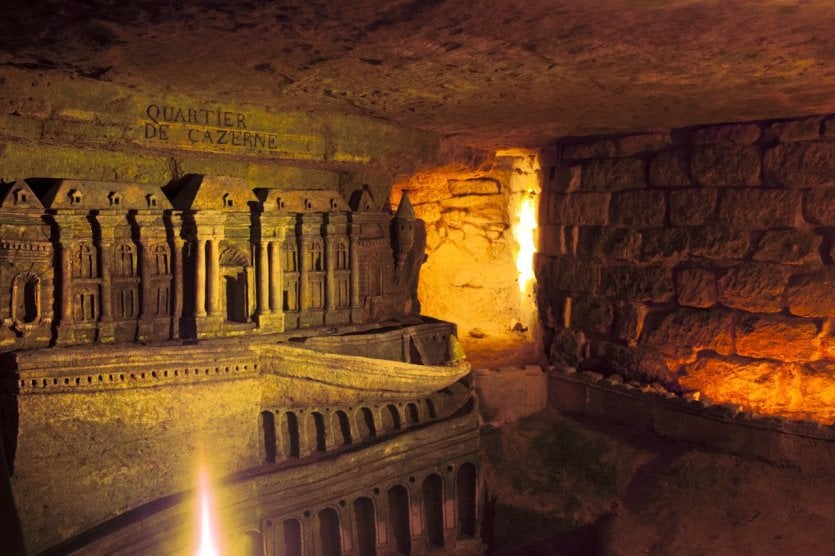
Rome's catacombs© Nicole - Adobe Stock
An impressive visit, but well worth it! The ancestors of today's cemeteries, these underground galleries were used from the 2nd to the5th century to bury the dead in Rome. At the time, it was forbidden to bury bodies inside the walls of Rome, as the tradition was to cremate the dead. Christians opposed to this practice began digging these famous catacombs. During your visit, you'll wander through the dark, damp galleries and discover tombs still inscribed with the names of the people who have lain there for centuries... Impressive! Reservations are required for access, so remember to buy your tickets in advance.
16. What to do in Rome Visit Castel Sant'Angelo
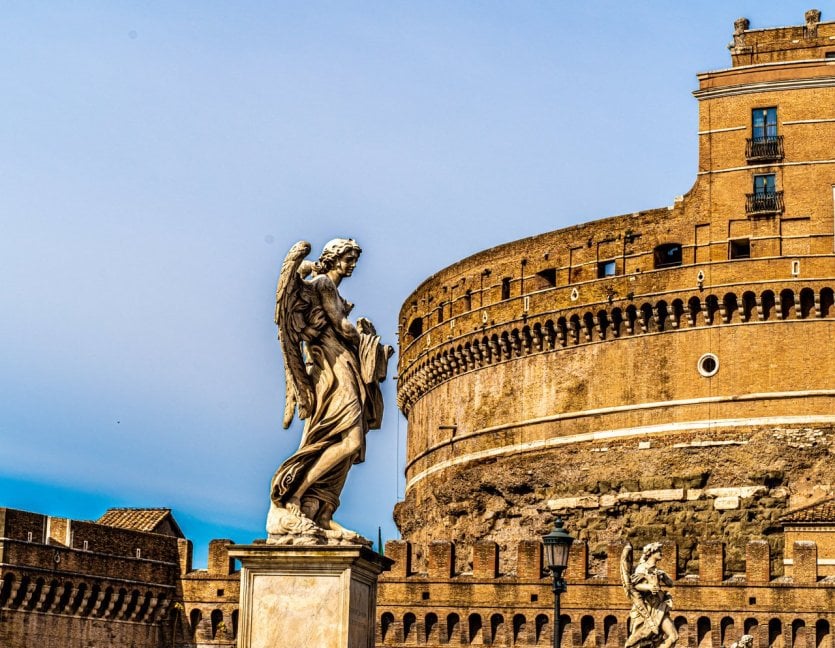
Castel Sant'Angelo© Fiorella - Adobe Stock
Castel Sant'Angelo was built in the 2nd century on the orders of the emperor Hadrian. It took the name of the Archangel Michael in 590, when the Pope of the time, Gregory I, saw the archangel appear above the mausoleum in the midst of a plague epidemic. The latter put his sword back in its sheath, a sign that the epidemic was coming to an end. More recently, the Castel Sant'Angelo was also featured in Dan Brown's book Angels & Demons, where it serves as a hideout for the Illuminati. Be sure to your tickets to visit all floors of the building the mausoleum, the prison, the museum, the papal apartments and the terrace with the famous statue of St. Michael.
17. The Baths of Caracalla
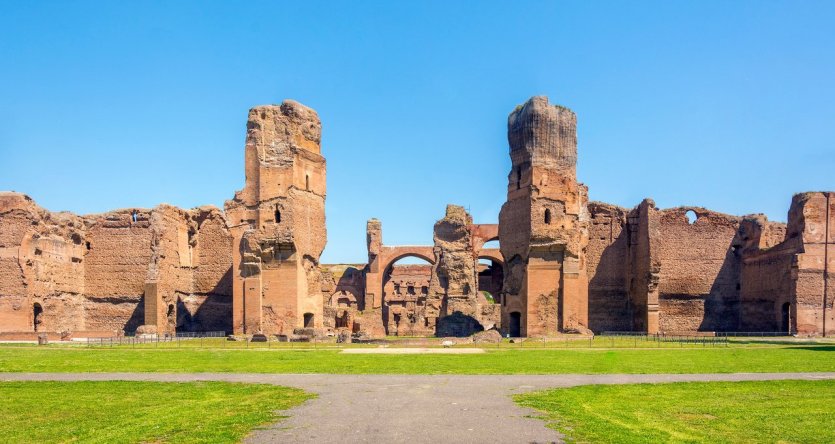
The Baths of Caracalla© rarrarorro - Adobe Stock
Located at the foot of the Aventine hill, the imposing ruins of the Baths of Caracalla bear witness to the splendor of what was once one of the largest and richest thermal establishments in the Roman Empire. They could accommodate 1,600 people, which was immense for the time. Unfortunately, not much remains in terms of decoration, but the buildings still retain a floor and a large part of the walls. With a little imagination, you can immerse yourself in the splendor of times gone by. Take a look at the floor and you'll also see that the remaining mosaics still reveal shapes such as horsemen riding sea animals. If you're in a hurry and don't have much time to visit everything you'd like, we recommend you opt for theticket solution to visit Rome's must-see thermal baths.
18. What to do in Rome Visit the Capuchin Crypt
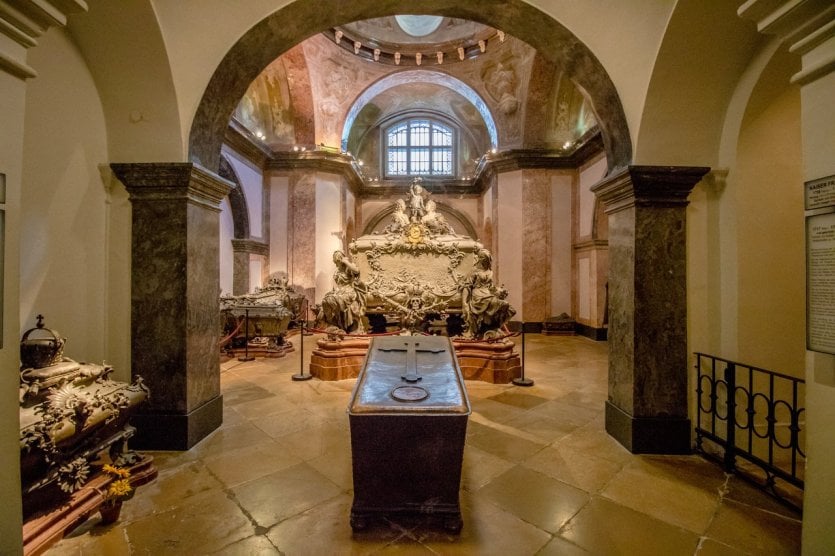
Rome's Capuchin Crypt© romanple - Adobe Stock
Among the countless wonders to be discovered in Rome, don't miss a visit to the Capuchin Crypt, a place halfway between the beautiful and the gloomy. It was the custom of these monks, when one of their number died, to exhume the remains of the longest-buried monk, replacing him with the one who had just died. Today, the crypt houses the remains of some 3,600 monks buried between 1500 and 1870. The visit ends with a message: Quello che voi siete noi eravamo, quello che noi siamo voi sarete (We were once exactly what you are now; what we are now, you will become), a reminder that life is fleeting. For even more thrills, take the tour with a guide bookable here, and step back in time to meet the 16th-century monks...
19. The Domus Aurea (Nero's house)
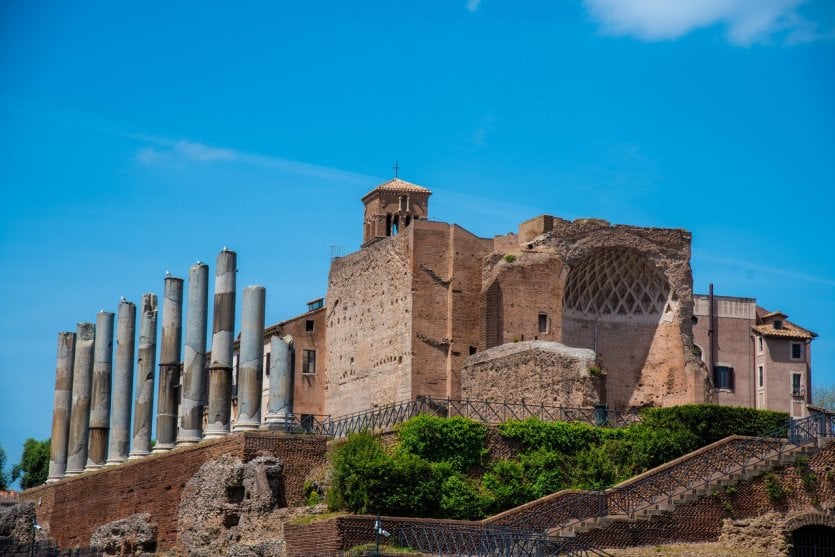
The Domus Aurea (Nero's house)© remoarcaro - Adobe Stock
A must-see: considered the most extravagant structure in the history of Rome, the Domus Aurea is Nero's former residence. He had it built after the fire of Rome in 64 AD destroyed much of the city. He wanted a palace that achieved the pinnacle of luxury and splendor. A guided tour will allow you to wander through the immense rooms and discover what this palace for feasts and banquets was like, surrounded by gardens, woods and even an artificial lake!
20. What to do in Rome Stroll around the piazza di Spagna
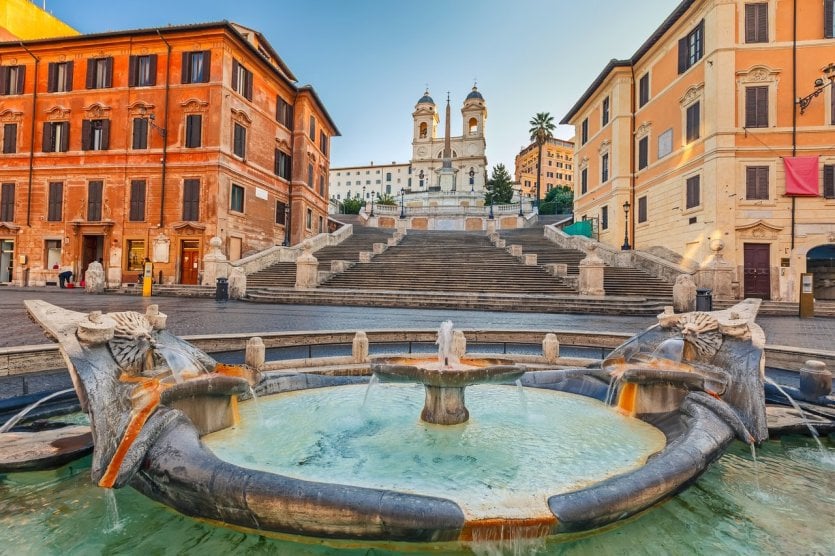
Piazza di Spagna© sborisov - Adobe Stock
This isone of Rome's most famous and liveliest squares, often considered the symbol of the Italian capital's cultural and architectural heritage. Don't miss the magnificent perspective offered by the location of the Barbaccia fountain and the monumental staircase leading to the Church of the Trinità dei Monti, which we also recommend you visit. For lovers of antiques, take the opportunity to browse the boutiques in the streets around the square, such as via Condotti, via Frattina and via del Babuino.
21. What to do in Rome Taste the famous gelati
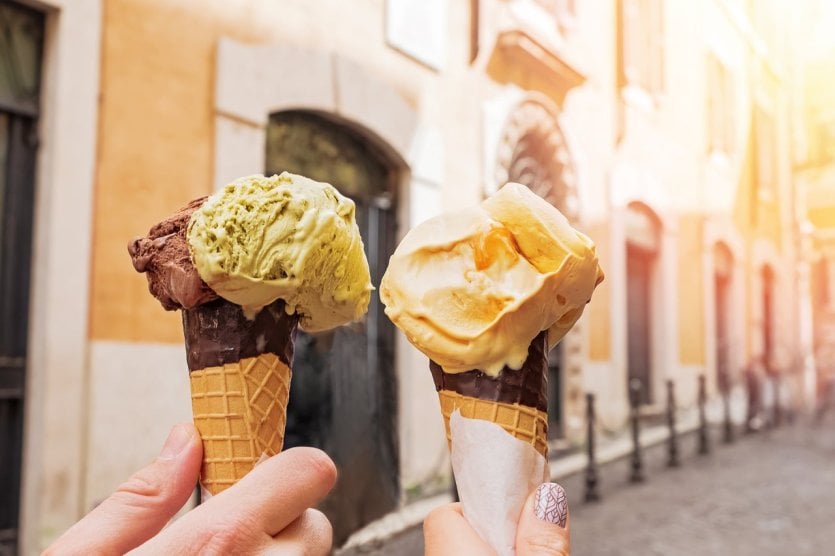
Rome's gelati© Diana Vyshniakova - Adobe Stock
Food lovers beware! If there's one thing that's unimaginable in Rome, it's the idea of visiting the Eternal City without sampling one of its famous specialties: gelati (Italian-style ice cream). Whether you prefer ice cream or sorbet, cones or tubs, you're bound to find a gelato to suit your taste. And to make things easier for you, we've put together a list of the best places to go for gelato in Rome! Don't thank us...
When is the best time to visit Rome?
The climate in Rome is generally pleasant, with mild winters and mild weather. However, summer can be very hot, especially in August, when many Romans leave in search of cooler temperatures, leaving the city rather deserted. This period can make visiting the city less enjoyable and give the impression of a dead city. As spring can be quite rainy, the best time to visit Rome is autumn, especially during the "ottobrate romane" in October, when the climate is similar to that of an Indian summer.
How to get to Rome
There are several ways to get to Rome.
- If you arrive at Rome Fiumicino airport, a shuttle bus will take you to the city center. It's easy to find a flight to Rome, as a large number of airlines serve the Eternal City. Don't hesitate to book your tickets via the platform of our partner site to save on your journey!
- If you prefer to travel by car, you can drive your own or rent a car locally by booking here!
- If you're coming by train, Stazione Termini is Rome's main station. You should be able to easily find a train from your home to Rome by clicking here!
Getting around Rome
Renting a car in the center of Rome is both unnecessary and expensive. Even the most remote tourist attractions are easily reached by bus or metro. Rome's metro has 3 lines (A, B, C) and operates daily from 5.30am to 11.30pm. It closes at 0.30 a.m. on Fridays and Saturdays. As far as public transport fares in Rome are concerned, tickets are accepted for all means of transport in the city, such as buses, streetcars and the metro. Costs range from 1.50? for a one-way ticket to 6? for a day ticket (16.50? for 3 days) or 24? for a weekly pass.
To avoid multiple transportation costs, or long hours of walking, you can also choose to book an electric bike with our partner.
Where to stay in Rome? Our selection of the best hotels
Rome is a very popular tourist city, offering an abundance of accommodation to suit all tastes and budgets. Most of Rome's hotels are located in central tourist areas such as the historic center, the Vatican and Trastevere. It's advisable to book in advance, especially during peak periods, to guarantee the best deals and optimum availability. Here are our top 3 best hotels in Rome!
- The most central
The Hotel Dei Borgognoni is an excellent address for a charming stay in one of Rome's most sought-after districts. It's close to the Trevi Fountain and the historic center. Everything is within walking distance, and it's quiet and well secluded. For rates and availability, click here!
- For art lovers
Hotel Relais Rione Ponte is distinguished not only by its elegance, but also by a small art gallery displaying original works by contemporary artists. The rooms are decorated by some of today's top designers. For rates and availability, click here!
- For history buffs
Hotel Voi Donna Camilla Savelli is one of Rome's most historic hotels. It's a former convent that was restructured by the architect Borromini himself. For rates and availability, click here!
What to do in Rome in 3 days
If you're coming to Rome for three days, here's a suggested itinerary to make the most of your stay. You can also read our dedicated article "How to visit Rome in 3 days? Itinerary tips".
Day 1:
Start by visiting the Colosseum, one of Rome's most emblematic monuments. Be sure to get advance tickets to avoid long lines. Near the Colosseum, visit the Roman Forum and Mount Palatine. These archaeological sites offer a fascinating insight into Rome's history. Head for the Trevi Fountain, where you can toss a coin and make a wish. Take the opportunity to stroll through the picturesque streets of Rome's historic center.
Day 2:
Visit Vatican City, including St. Peter's Basilica and the Vatican Museums. Again, we recommend booking tickets in advance to avoid long queues. Explore the magnificent Vatican Museums, home to art masterpieces such as the Sistine Chapel and Michelangelo's fresco. After visiting the Vatican, stroll through the Trastevere district, known for its picturesque alleyways, restaurants and lively atmosphere.
Day 3:
Visit Piazza Navona, a historic square lined with magnificent buildings and fountains. Don't miss the Fountain of the Four Rivers, a Baroque masterpiece by Gian Lorenzo Bernini. Next, explore the Pantheon, an ancient Roman temple transformed into a church, famous for its impressive dome and mystical atmosphere. Finish your day with a visit to the Villa Borghese, a vast park where you can relax, take a bike ride or visit the Galleria Borghese, home to a collection of magnificent works of art.
Of course, there's much more to see and do in Rome, but this itinerary gives you a good overview of the city's main must-see attractions in three days. Don't forget to allow yourself time to get lost in Rome's narrow streets, sample some delicious Italian cuisine and do a little family shopping in Rome's largest outlet village!
And if you're interested in visiting Italy, check out the 18 must-sees in Naples or our article "What to do in Milan? 16 must-sees".


